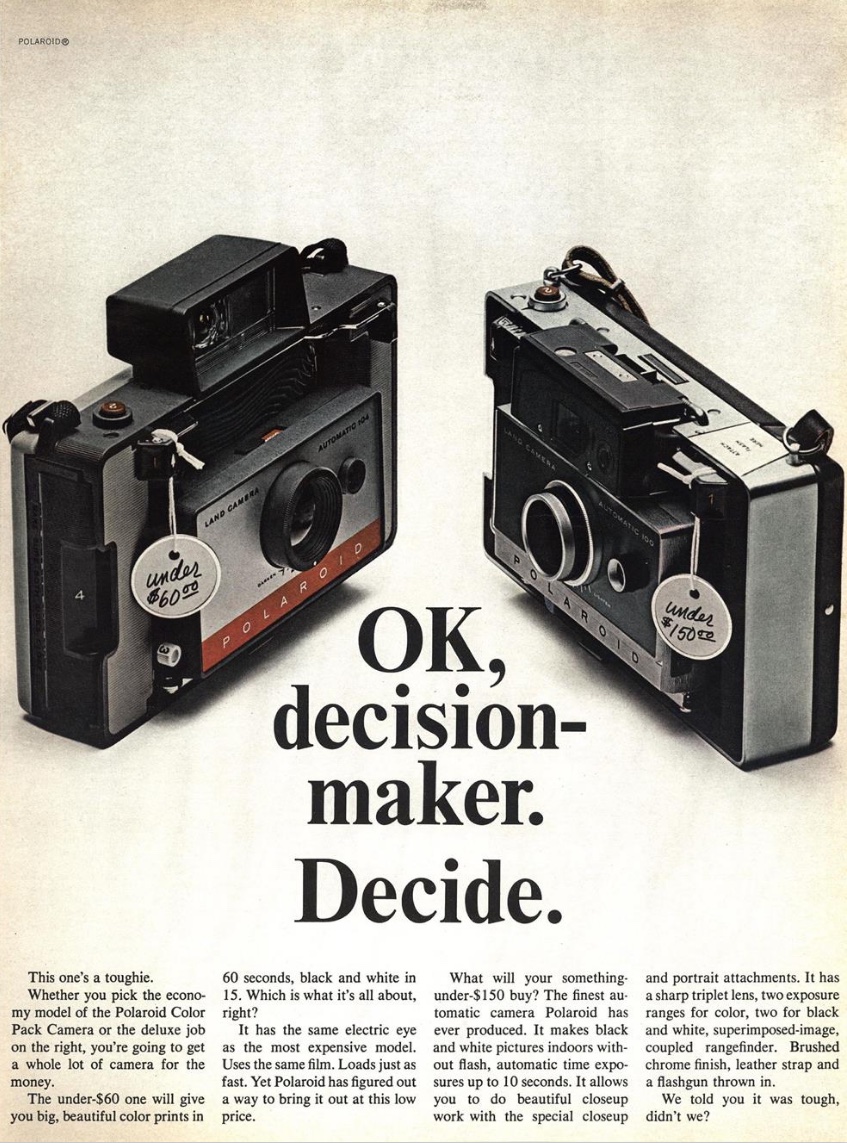Phyllis Kenner Robinson was born in New York City on Oct. 22, 1921. At age seven she declared her desire to become a poet. A few years later, she updated her ambitions. Unlike her peers, she knew she wanted to write advertisements from an early age.
“I can remember that as a kid I was influenced just by the vitality of some of the retail store advertising that was going on,” she said. When other little girls in P.S. 50 were dreaming of growing up to be Ginger Rogers, I wanted to be Dorothy Parker, and I looked constantly for excuses to write jingles.”
In 1942, Kenner graduated with a bachelor of arts degree in sociology from Barnard College. During World War II, she was a statistician for the federal Public Housing Authority. After the war, she married Richard G, Robinson, a student at Harvard. She also worked on the college newspaper at Barnard, wrote for a society publication called ‘Park East’, and was a reporter at ‘Women’s Wear Daily’ before becoming a copywriter.
It was in Boston in 1946 that Phyllis Robinson first worked for an ad agency. She was hired to write women’s fashion ads by Bresnick & Solomont in Boston. After returning to New York, she joined Grey—where Bill Bernbach was the creative director.

Copy Chief at DDB
When Bill Bernbach and Ned Boyle of Grey jumped ship and formed a new agency with Maxwell Dane in 1949, Bernbach asked Robinson to join Doyle Dane and Bernbach as copy chief. She agreed.
At the newly formed DDB, Robinson partnered with the art director, Bob Gage, and together they produced ads for marketers like Orbach’s department store, Polaroid instant cameras, and Levy’s bread. Working as a creative team was a new construct—one invented and perfected by the creative professionals at DDB.
“Pre-DDB,” Ms. Robinson said in an interview with Adweek in 2000, advertising was “artificial, sleepy and sometimes pretentious and schmaltzy.” Robinson and the DDB crew she managed and inspired helped to chart a new pathway for ad makers. Thanks to their trailblazing contributions to the form, the best ads then and now are endowed with intelligence, and their makers take risks and have fun doing so.
Levy’s Jewish Rye
Levy’s, a Jewish bakery in Brooklyn, hired the newly formed DDB in 1949 to promote its packaged ryes, pumpernickel, and raisin bread. The brand thrived under DDB’s guidance, as the agency expertly expanded the audience for their bread to “New York’s Army of Wonder Bread eaters.”

Polaroid
DDB introduced Americans to a new kind of bread, a new kind of car (Volkswagen), and an entirely new kind of camera. They did so with an emphasis on price, which was a common approach. They also injected sass or attitude into the Polaroid campaigns, which was not common.

Robinson and her DDB colleagues managed to position Polaroid as a low-cost alternative to traditional cameras. They also made ‘The Polaroid’ into a lifestyle choice, and the combination of pedestrian selling tactics with dreamy and youthful lifestyle imagery worked like a charm.
Chemstrand Hosiery
“A lady isn’t dressed unless her legs are too.” It’s one of Ms. Robinson’s most famous advertising lines.
Ad legend, David Ogilvy, defined the Hathaway man in his crisp shirts. Here, Robinson describes the “hip” Chemstrand lady.
Interestingly, she worked with Broadway director Mitch Leigh on the campaign, which led to another collaboration with him on his 1970 musical, Cry for Us All.
Phyllis Robinson’s Legacy
Phyllis Robinson was a discoverer and nurturer of talent. Ad legend, Mary Wells Lawrence, was one of her many recruits who, like Robinson herself, went on to the Copywriters Hall of Fame.
Keith Reinhard of DDB Worldwide, said, “Creators of today’s advertising would also do well to share Phyllis Robinson’s passionate aversion to bombast, hype, and flash. Phyllis herself personified substance and authenticity — Mary Wells said she’d buy a used car from her.”

Advertising is a team sport, and Robinson was an amazing team leader in addition to being a great writer and tastemaker.
In a 1970 interview with Japanese advertising magazine, Idea, Robinson said:
One reason we’ve flourished and prospered is that very early in the game, we started to introduce important new strains − Dave Reider, Helmut Krone, Bill Taubin, Ron Rosenfeld, Bob Levenson, I could go on and on …
If ever there was a group that was not stamped out with a cookie-cutter, it’s the creative people at Doyle Dane Bernbach. Believe me, every one of them is an original, and every new strain that comes in, every crossbreeding of these strains makes for a fresher, healthier creative product, it makes the agency stronger.
On top of all the rest, Phyllis Robinson was humble and hard working. Her teams were relentless and often tough on themselves—tougher than their clients ever were. Like true creators of culture, creatives at DDB during Robinson’s tenure always asked themselves, “Is it good enough?” This attention to detail and their drive to reach higher was complemented by a feeling of immense freedom.
I think we all had, including Bill, the feeling that we were let out of school – you know, no more teachers, no more books – we really felt we had been released from something. Now we could make up our own rules, do what we wanted – a tremendous feeling of freedom, just for starters. We felt free and sprung.
Robinson’s career in advertising was something she dreamed of, then lived. She brought fearlessness forward, was a trailblazing maker and inspiring leader of creative people. Ms. Robinson was the real deal.
